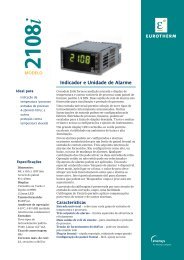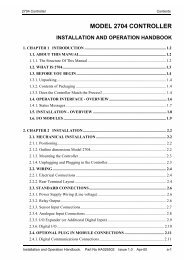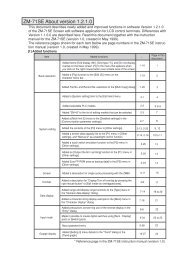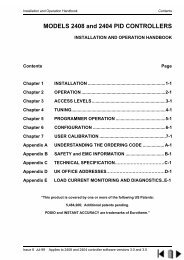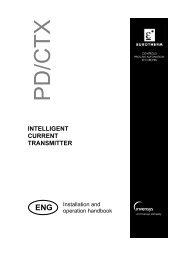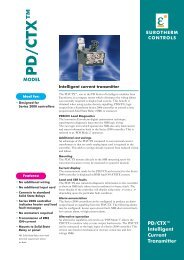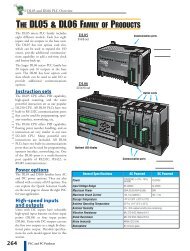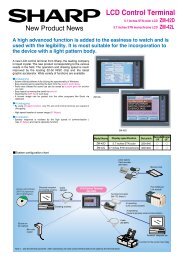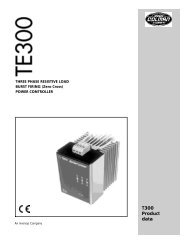Series 2000 Communications Handbook - Soliton
Series 2000 Communications Handbook - Soliton
Series 2000 Communications Handbook - Soliton
Create successful ePaper yourself
Turn your PDF publications into a flip-book with our unique Google optimized e-Paper software.
Modbus and EIBisynch Advanced Topics<strong>Series</strong> <strong>2000</strong> <strong>Communications</strong> <strong>Handbook</strong>7. CHAPTER 7 Modbus and EI BisynchADVANCED TOPICS7.1. ACCESS TO FULL RESOLUTION FLOATING POINT ANDTIMING DATA (MODBUS ONLY)One of the main limitations of Modbus is that only 16 bit integer representations of data cannormally be transferred. In most cases, this does not cause a problem, since appropriatescaling can be applied to the values without losing precision. Indeed all values displayable onthe 4 digit <strong>Series</strong> <strong>2000</strong> front panel may be transferred in this way. However this has thesignificant drawback that the scaling factor to be applied needs to be known at both ends ofthe communications link.One further problem is that certain ‘time’ parameters, notably those used for the programmerfunction are always returned over the communications link in seconds. It is possible for longdurations to overflow the 16 bit Modbus limit.To overcome these problems, a sub protocol has been defined, using the upper portion of theModbus address space (8000h and upwards), allowing full 32 bit resolution floating pointand timer parameters. The upper area is known as the IEEE region.This sub-protocol provides two consecutive Modbus addresses for all parameters. The baseaddress for any given parameter in the IEEE region can easily be calculated by taking itsnormal Modbus address, doubling it, and adding 8000h. For example, the address in theIEEE region of the Target Setpoint (Modbus address 2) is simply2 x 2 + 8000h = 8004h = 32772 decimalThis calculation applies to any parameter that has a Modbus address.Access to the IEEE area is made via block reads (Functions 3 & 4) and writes (Function 16).Attempts to use the ‘Write a Word’ (Function 6) operation will be rejected with an errorresponse. Furthermore, block reads and writes using the IEEE region should only beperformed at even addresses, although no damage to the instrument will result in attemptingaccess at odd addresses. In general, the ‘number of words’ field, in the Modbus frame,should be set to 2 times what it would have been for ‘normal’ Modbus.The rules governing how the data in the two consecutive Modbus addresses are organiseddepending on the ‘data type’ of the parameter.7-2 <strong>Series</strong> <strong>2000</strong> <strong>Communications</strong> <strong>Handbook</strong> Part No HA026230 Issue 2.0 Feb-00



